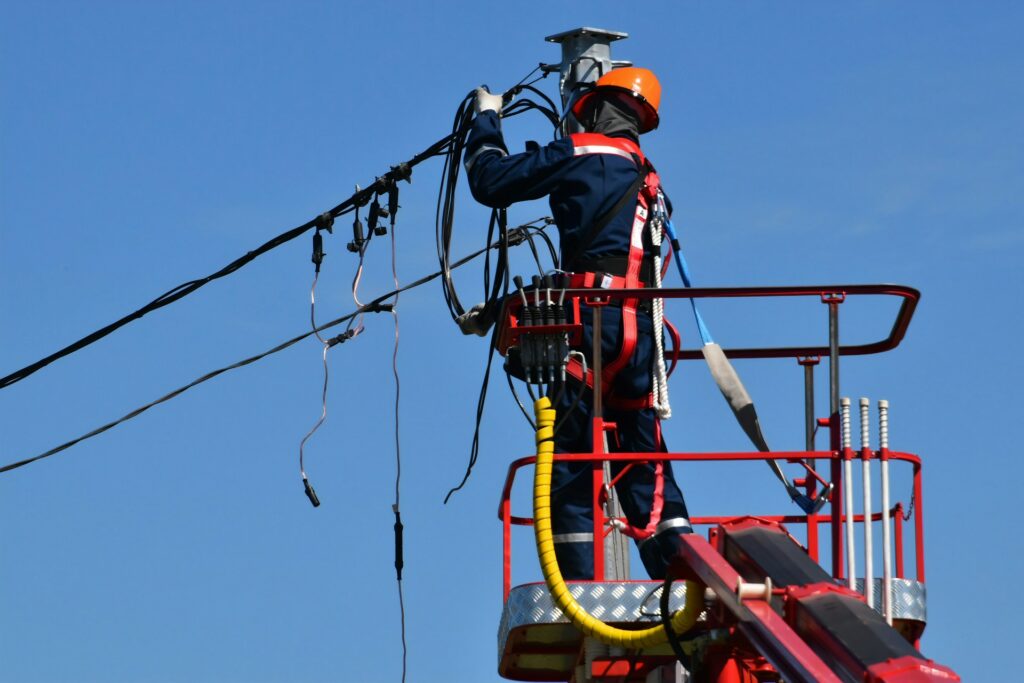
(Rightallegiance.com) – In a devastating turn of events, a fallen power line claimed the lives of three individuals and injured a baby in northeast Portland, Oregon, during a fierce ice storm that left roads and mountain highways perilous in the Pacific Northwest. The incident occurred on Wednesday, prompting frantic calls to dispatchers as onlookers witnessed the electrocution of individuals near a downed power line.
According to a statement from the city’s fire department, a branch had fallen on a power line, causing it to collapse onto an SUV. In a courageous attempt to save a life, a resident grabbed the baby from one of the victims lying on the street. Tragically, the three individuals – two adults and one teenager – were found dead upon the arrival of firefighters. The baby, rescued in the chaos, was rushed to the hospital. It is believed that the victims were electrocuted after exiting the vehicle.
The power company, later identified as unspecified in the statement, de-energized the line. The incident unfolded against the backdrop of a region under warnings for significant ice accumulation, exacerbating the damage caused by a powerful storm over the preceding weekend.
The National Weather Service issued warnings for freezing rain in the region, posing ongoing risks to areas like the eastern Portland metro area and the western Columbia River Gorge. Portland transportation officials urged the public to stay off the roads through Thursday morning, while numerous school districts, including Oregon’s largest, canceled classes for the third consecutive day due to hazardous road conditions.
The deaths on Wednesday added to the toll of a deadly storm that claimed at least seven lives over the weekend, with fallen trees and suspected hypothermia contributing to the fatalities. Eyewitnesses like Daniel Buck described a harrowing scene of live wires preventing immediate assistance to the victims, underscoring the severity of the incident.
As the Pacific Northwest grapples with the aftermath, the storm’s impact reverberated across the region. Flights were canceled or delayed, and power outages affected around 90,000 homes and businesses, primarily in Oregon. Freezing temperatures even reached as far south as North Florida.
The storm’s reach extended beyond the U.S. border, with Vancouver, British Columbia, experiencing heavy snowfall and traffic disruptions. In the Midwest, Chicago and Detroit faced frigid temperatures colder than Alaska’s capital, Juneau. Despite the challenges, some found solace in the beauty of snow-covered landscapes.
Further east, western New York reported three weather-related deaths in as many days. Tractor-trailer accidents on Interstate 81 in northeastern Pennsylvania resulted in five fatalities, highlighting the dangers of slick pavement.
Buffalo faced heavy lake-effect snow, with up to 4 inches an hour expected, compounding the challenges following a previous storm that delayed an NFL playoff game. Residents, like Patrick Sahr in Buffalo, coped with significant snowfall, emphasizing the need to keep up with continuous snow removal.
Meanwhile, on the Crow Creek Sioux Reservation in South Dakota, efforts were made to support vulnerable individuals enduring substandard living conditions. In Tennessee, at least six weather-related deaths were confirmed, prompting school closures and a record peak power demand for the Tennessee Valley Authority.
As communities across the Pacific Northwest and beyond grapple with the aftermath of this relentless storm, the tragic incident in Portland serves as a somber reminder of the far-reaching consequences of extreme weather events.